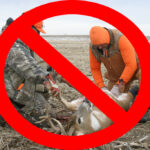The act of a child purposefully killing an animal evokes a fervent array of emotions, concern, and an inquisitive bewilderment. Society generally perceives such behavior as troubling, often intertwining it with deeper psychological implications. The gravity of this issue extends to familial dynamics, social environments, and the underlying psychology of the child themselves. It is imperative to dissect what transpires when a child engages in such an act, as it can reverberate through their development and underscore pertinent societal issues regarding empathy toward living beings.
The initial response to an incident where a child deliberately harms or kills an animal often oscillates between disbelief and alarm. Adults grapple with understanding how a young mind can muster the intent to commit such violence. Many may speculate about the external influences that could be at play: exposure to violent media, erratic parental guidance, or even peer pressure. Each of these factors can culminate in a scenario where a child, perhaps inadvertently, learns to desensitize themselves to the pain of others.
Moreover, there exists an innate fascination in youth with the natural world, often characterized by a sense of curious exploration. This curiosity can morph into a troubling engagement, where the boundaries between adoration and cruelty blur. Children may engage in power dynamics, testing their ability to exert control over a vulnerable animal. The animal, often perceived as an emblem of innocence, becomes a scapegoat for the child’s probing understanding of dominance and consequence.
The implications of such actions are far-reaching and multi-dimensional. Firstly, immediate repercussions may manifest in the form of disciplinary measures. Parents or guardians typically seek to admonish and correct the behavior, often without delving into the underlying motives. However, a punitive response, while seemingly justifiable, may inadvertently fail to provide the child with the necessary reflections to comprehend their actions.
To truly address the ramifications, one must probe into the precipitating factors behind such behavior. Psychologists frequently highlight patterns of aggression manifesting in youth as potential indicators of social or emotional distress. A child who exhibits violent tendencies towards animals may be grappling with unresolved trauma, bullying, or a profound lack of guidance in navigating their emotional landscape. It is crucial to recognize that these incidents seldom occur in isolation; they often signify a child’s struggle to articulate their feelings in a constructive manner.
In this scholarly exploration, one must also note the societal context within which these actions occur. The normalization of violence in culture—be it through media or games—can propagate a troubling desensitization to the sanctity of life. Consequently, a child may come to view the act of killing an animal not as morally reprehensible, but rather as a potential source of amusement or a tourniquet for their frustrations.
Moreover, there lies a stark contrast in how society reacts to these incidents, often influenced by cultural perceptions of animals. In some cultures, animals represent a commodity, disconnected from the moral fabric that binds human existence. Conversely, other cultures uphold animal rights as an integral part of ethical considerations. This dichotomy further complicates the response towards a child’s harmful actions and can create a societal rift that influences behavior norms.
The path forward involves a delicate fusion of understanding, intervention, and education. It necessitates an approach that encourages dialogue between children and adults, fostering an atmosphere where emotional expression aligns with empathetic interaction towards all living beings. It is imperative for parents, educators, and community members to recognize early signs of distress or aggression and engage in discussions that center around compassion and the ramifications of actions.
Therapeutic interventions can be exceedingly efficacious in addressing the root causes of such behaviors. Programs that emphasize empathy, animal care, and responsibility can instill within a child a reverence for life. Initiatives that incorporate animals within therapeutic settings—such as pet therapy—have shown promise in redirecting aggressive tendencies while simultaneously nurturing a sense of companionship and responsibility.
Another avenue for progression can be found in educational reform, where curricula are enriched with lessons on animal welfare and ethical considerations regarding life. By instilling values of respect and compassion toward animals, society cultivates a generation equipped with the tools to react empathetically rather than violently. Knowledge about ecosystems, biodiversity, and conservation can enrich a child’s perspective, fostering a sense of stewardship toward living beings.
In summation, an incident where a child kills an animal on purpose is not merely an isolated act of cruelty, but rather a multifaceted revelation into the developmental psyche of youth. Addressing the behavior requires an intersection of understanding, proactive measures, and educational initiatives to cultivate empathy and compassion. Only by delving into the complexities surrounding such actions can society begin to illuminate a path toward healing and understanding—both for the individuals involved and the broader community.




